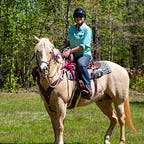Ancient and Imperiled Gopher Tortoises
I have a special place in my heart for the Gopher Tortoise Council. Those three words alone transport me back to childhood. One of my first exposures to activism was tagging along with my dad to the Gopher Tortoise Council meetings held at Auburn University back in the 1970s.
In adulthood, other than wishing I still had my original Gopher Tortoise Council t-shirts, I didn’t give much thought to those tortoises until I read Janisse Ray’s Ecology of a Cracker Childhood (Milkweed Editions, 1999), a book which opened my eyes to the complex, gorgeously choreographed longleaf pine forest ecosystem. I began to appreciate the gopher tortoise anew, as well as the red-cockaded woodpecker, the eastern indigo snake, the bobwhite quail, and the many other species living in the longleaf pine forest.
The gopher tortoise (Gopherus polyphemus) is one of the oldest living species on the planet, and the only tortoise native to North America this side of the Mississippi River. They are notable for their large paddle-like front limbs which they use to dig elaborate burrows, a behavior acknowledged in their very name: “gopherus” after the burrowing gophers, and “polyphemus” after the mythological Greek cave-dwelling giant. Their burrows, which are typically around 15 feet long but can be as large as 40 feet long and 10 feet deep, are home to over 360 species. This earns the gopher tortoise the distinction of keystone species, that is, a species whose demise would significantly alter an ecosystem or cause its collapse entirely.
The gopher tortoise range includes the southeastern coastal plain, well south of our home in Lee County, Alabama. There was a day, however, when a gopher tortoise showed up in our neighborhood.
Our daughter Anna, age 4 at the time, found a funny little turtle in our wooded yard. She named it Speedy, and after playing with it a while, turned it loose to carry on its natural business. We assumed she’d found a box turtle and gave it little thought.
The next day when we went to fetch her from her pre-school, located in a house about a mile from ours, she excitedly introduced us to Speedy. Speedy was no box turtle. He was a young gopher tortoise who had miraculously found our Anna not once but twice in two days!
Despite the fact that my dad wanted to keep the tortoise as a pet (rules did not apply), we located its rightful caretaker, a young researcher with Auburn University. He was greatly relieved to have his valuable specimen returned safely.
“How is it that this little fella found Anna twice?” I wondered.
“Gopher tortoises are like that,” my stepmother Janie answered, as if everyone knows their mystical powers.
This gopher tortoise tale had a happy ending. Unfortunately, the current state of gopher tortoises is concerning. Although they have survived for 60 million years, we humans have managed to cause an 80% decline in their numbers over the last 100 years through the destruction of the longleaf ecosystem, land fragmentation, fire suppression, roads, urban sprawl, development, and other short-sighted activities. Still, in October 2022, the US Fish and Wildlife Service determined that some populations do not merit protection under the Endangered Species Act. This decision remains contentious.
Isn’t it astonishing that we humans can be so destructive to the very planet that sustains us? It’s as if we somehow think we have the right to destroy the livelihood of other species without a backwards glance. It’s as if we’ve lost sight of the fact that we are part of the living world, separated from our environment, including other creatures, by mere cell membranes.
I had the pleasure of hearing aforementioned environmental activist and writer Janisse Ray at the Arts at the Confluence 2022 celebration at First Church in Atlanta recently. She closed her talk with this quote from poet Adrienne Rich, bringing herself and her audience to tears:
“My heart is moved by all I cannot save: so much has been destroyed. I have to cast my lot with those who, age after age, perversely, with no extraordinary power, reconstitute the world.”
For more information on gopher tortoises, or to cast your lot with members of the Gopher Tortoise Council, visit their website at gophertortoisecouncil.org. If nothing else, you can purchase some very cool t-shirts to support the cause.
Mary Dansak is a writer and a retired science education specialist living in Auburn, AL. She can be reached at maryfdansak@gmail.com.
This essay originally appeared as a column in the Auburn Villager on November 17, 2022.
